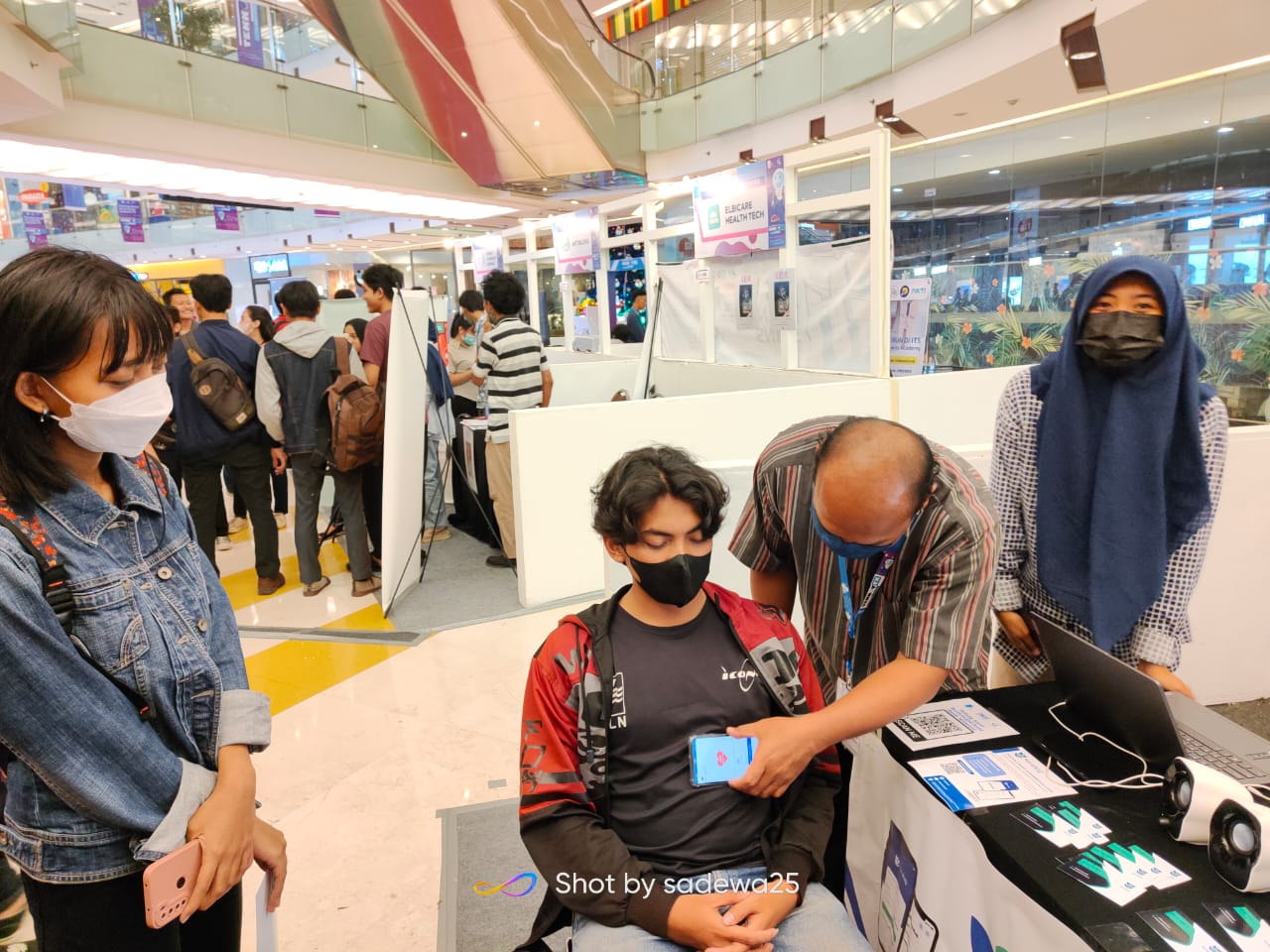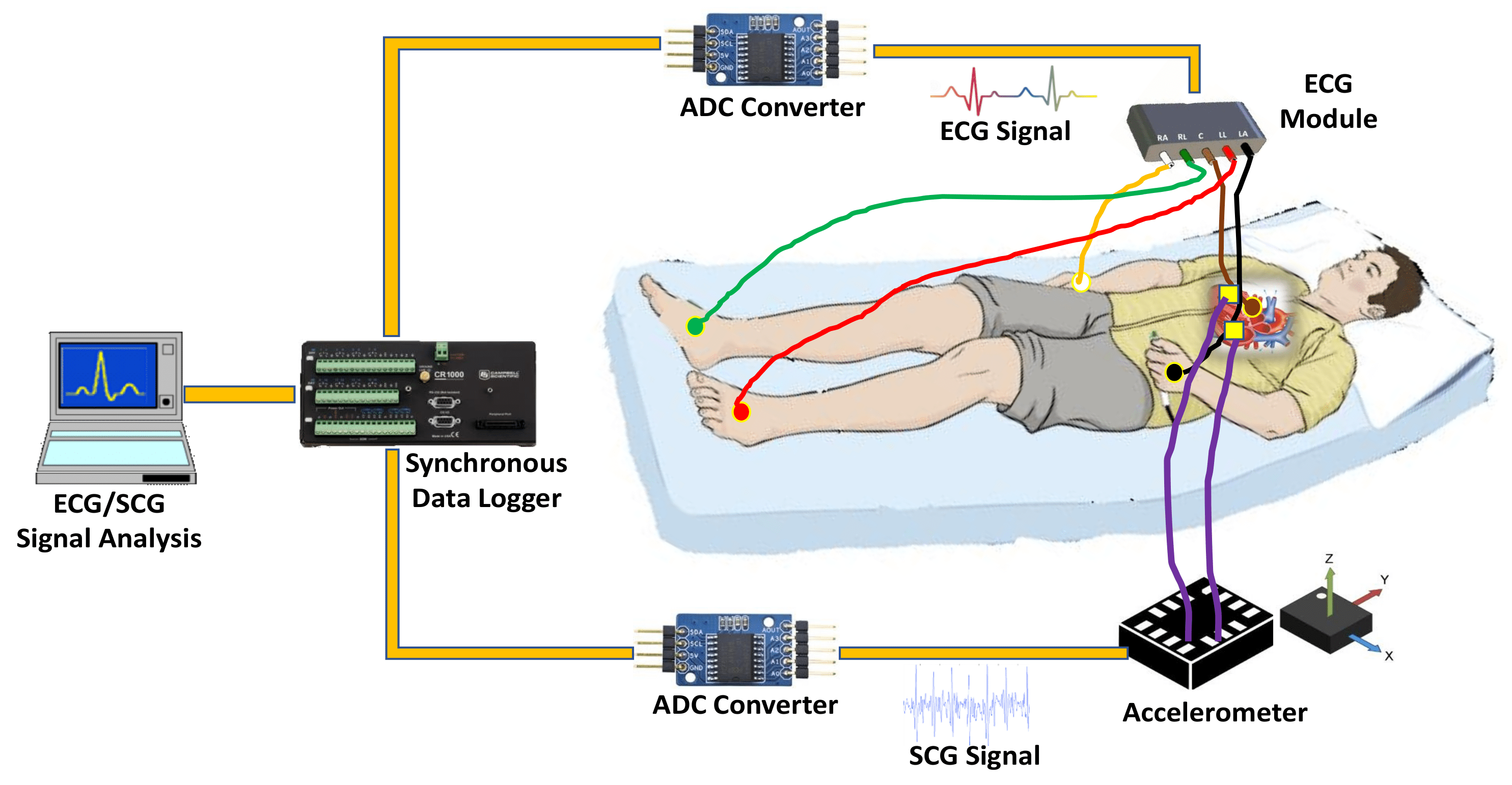KardiaQ, ITS Academic Community Solution for Detecting Heart Health

Frans Rizal Agustiyanto MSi (second from right) while helping one of the TENNOVEX 2022 visitors at the Atrium Grand City Surabaya who monitors his heart health with KardiaQ
ITS Campus, ITS News — The Indonesian Ministry of Health (Kemenkes) states that every 60 seconds someone dies from heart disease. Lack of early detection is still a serious problem resulting in delays in diagnosis. A new solution emerged from Institut Teknologi Sepuluh Nopember (ITS) student Frans Rizal Agustiyanto MSi by presenting the KardiaQ application, a user-friendly heart health monitor.
Heart disease is like a silent killer because sufferers are unable to detect it early. Contributing factors include the high cost of examinations, difficulties in finding examination locations, limited access to heart specialists, and long examination times. “Through the KardiaQ application, people can monitor their heart health in a short time at home,” said this doctoral student from the ITS Engineering Physics Department.
Frans continued that this application, which is available on Android and iOS-based cellphones, is also very easy to operate. By being in a stable place, the cellphone with the KardiaQ application installed is placed horizontally right on the left chest area. Then, the heart-shaped button on the app is pressed and the user must hold their breath for 15 seconds until they hear a ringing sound. “During heart rate readings, users are not recommended to move so that the reading results are more accurate,” he advised.

Display of the KardiaQ application on the user’s cellphone
The results of KardiaQ readings will be in the form of seismocardiography (SCG) and phonocardiography (PCG). The SCG and PCG signals are the condition of the heart components and the output is the heart rate in beats per minute (bpm). This result is measured from harmonic vibrations detected by the accelerometer sensor on the cellphone. The vibration signal is then processed into SCG and FCG signals. “Normal heart conditions are in the range of 60 – 120 bpm,” explained this alumnus of Bachelor of Physics from Jakarta State University (UNJ).
Going deeper, PCG itself is a recording of the sounds produced by the heart during the heartbeat cycle. The recording results from the sound of the heartbeat and additional sounds produced by the flow of blood through the heart structure. From these recordings, doctors usually analyze heart sound patterns and detect heart problems. Meanwhile, reading the SCG signal graph itself is used to diagnose heart problems such as rhythm disturbances or weak contractions.
After further research regarding SCG and PCG, Frans obtained validation that phonocardiography and seismocardiometer measuring instruments utilize accelerometer sensors to read the condition of the human heart. An accelerometer is a sensor used to measure changes in the speed of an object in three different dimensions. The accelerometer will later produce data about the movement or vibration experienced by the object.
On a phonocardiograph, an accelerometer is used to help isolate and record heart sounds more clearly. Meanwhile, the accelerometer on the seismocardiometer is used to detect vibrations produced by heart movement. According to the Alodokter website, the heartbeat can indeed create a vibration sensation in the left chest, especially when lying down. “So it is recommended that users be in a supine position to minimize vibrations due to body movements,” explained a lecturer at the Department of Physics, Mahmud Yunus State Islamic University, Batusangkar.

Use of accelerometer sensors in PCG and SCG measurements (Rai et al., 2021)
Quoted from a journal entitled Accelerometer Sensor Application on Android Cellphones as an Online Recorder of Earthquake Vibrations, most cellphone devices are equipped with accelerometer sensors that can measure motion, orientation, and various environmental conditions. Frans took advantage of this opportunity for technological development to make cell phones the main tool for his research products.
One of the scientific journals written by Adinarayana in 2014 also stated that heart sound signals are weak sound wave signals and are generally in the range of 10-250 Hertz. Therefore, the sensors on mobile phones are also able to capture these signals. “So people who want to check their heart health can use their cellphone to detect abnormalities in their heart rhythm,” he explained.
Apart from detecting the user’s heart rate, KardiaQ is also equipped with other features that make it easier for users, such as checking heart rate history to make it easier to monitor heart health from time to time. KardiaQ also facilitates users to consult with heart specialists via the chat feature. “Users can see the systolic and diastolic heart, which is useful for further consultation with a heart specialist,” said the man born in 1979.

Systolic profile (right) and diastolic profile (left) from reading the user’s heart rate on KardiaQ
Frans hopes that with the KardiaQ application, which was researched under the guidance of lecturer Agus Muhamad Hatta ST MSi PhD, people will be more aware of heart health and regularly monitor their heart condition. “The hope is that KardiaQ can be used widely and can contribute to reducing death rates from heart disease,” he concluded.
Reporter: Frecia Elrivia Mardianto
Redaktur: Astri Nawwar Kusumaningtyas
KardiaQ, ITS Academic Community Solution for Detecting Heart Health
Related News
-
ITS Ranks as the Best University in Marketing in Indonesia
ITS Campus, ITS News — Continuously striving to meet industry needs has successfully brought Institut Teknologi Sepuluh Nopember (ITS)
September 07, 2023 16:09 -
ITS Academic Staff Initiates Work Safety Revolution through Digital Technology
ITS Campus, ITS News — Based on existing report data, 17 kinds of accidents mostly occur due to the lack
September 07, 2023 16:09 -
ITS Collaboration with BPBD East Java, Launching VR Disaster Simulation
ITS Campus, ITS News — Supporting anticipation of disasters and continuing to educate the public, Institut Teknologi Sepuluh Nopember
September 07, 2023 16:09 -
Supporting the Implementation of Innovative Ideas, ITS and IYSA Hold International Competition
ITS Campus, ITS News — Institut Teknologi Sepuluh Nopember (ITS) has once again proven its commitment to supporting the
September 07, 2023 16:09
